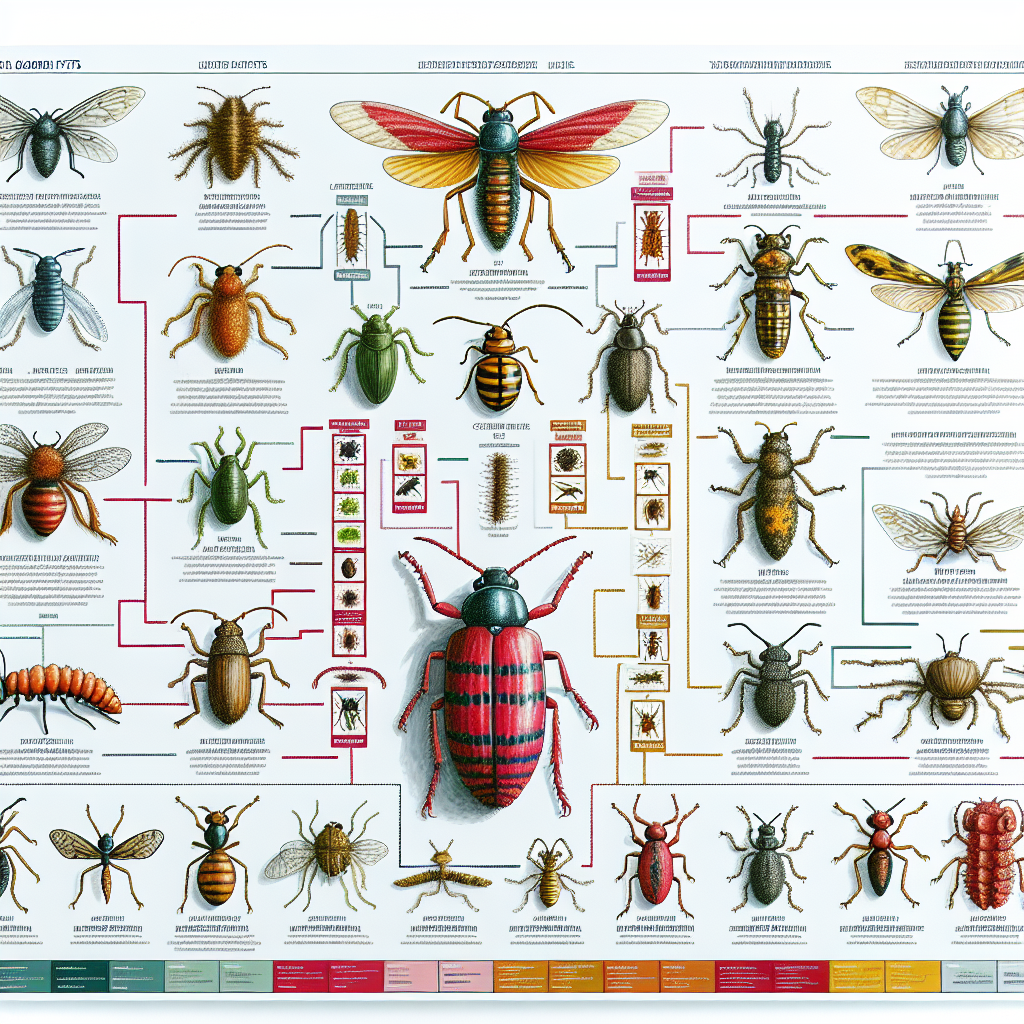Identifying Common Garden Pests: A Visual Guide
Gardening is a tranquil hobby that provides outdoor enjoyment for many. Not only is it a therapeutic pastime, but it’s also an excellent way to produce your own fruits, vegetables, and beautiful flowers. However, one challenge that gardeners of all levels face is dealing with garden pests. These unwelcome visitors not only wreak havoc on your plants but can turn a once vibrant garden into a struggling plot. To help you keep your garden flourishing, we’ve compiled a visual guide to identify some of the most common garden pests and how to control them effectively.
Aphids
These tiny, sap-sucking insects are among the most common pests in the garden. Aphids can be green, black, brown, or even pink and often cluster on the undersides of leaves or stems. They excrete a sticky residue known as honeydew, which can attract ants and lead to sooty mold growth.
Control: Introduce beneficial insects such as ladybugs or apply neem oil, which is a natural pesticide.
Japanese Beetles
These shiny, metallic-looking pests are known for their voracious appetite for over 300 plant species. You’ll find Japanese beetles munching away on flowers and skeletonizing leaves.
Control: Hand-picking can be effective for small infestations. Otherwise, consider using pheromone traps or natural predators like birds to keep their population in check.
Cutworms
Nighttime is feeding time for cutworms. These caterpillar-like insects can be devastating, especially to young plants, as they tend to cut through the stems at ground level.
Control: Create barriers around your seedlings using plant collars or diatomaceous earth. Bacillus thuringiensis (Bt) is also an effective, natural control method.
Spider Mites
Tiny but destructive, spider mites can be hard to spot until damage is visible. Look for fine webs and yellow or bronzed leaves as telltale signs.
Control: Regularly hose down your plants with water to dislodge mites. If necessary, miticides can help manage larger populations.
Slugs and Snails
Both slugs and snails are notorious for leaving a trail of chewed leaves and silvery slime. They are particularly fond of moist, shaded gardens.
Control: Hand-picking, bait traps, or copper barriers can be effective. Attracting natural predators, such as birds and toads, can also reduce their numbers.
Caterpillars
These worm-like insects later become beautiful butterflies or moths, but as caterpillars, they can cause significant damage by chewing on leaves and fruits.
Control: Regular inspection and hand-picking can control their numbers. Bt-based insecticides are also useful against most caterpillar species.
Whiteflies
The name is quite revealing; these tiny, white-winged insects tend to fly off in clouds when plants are disturbed. They suck sap from plants, leading to yellowing leaves and stunted growth.
Control: Yellow sticky traps can catch adults, and insecticidal soaps are effective against the nymphs. Ensure good air circulation around plants to help prevent infestations.
Leaf Miners
Leaf miners are the larvae of various insects including flies, beetles, and moths. Their serpentine tunnels inside leaves are a dead giveaway to their presence.
Control: Remove and destroy affected leaves. Use floating row covers to prevent adult insects from laying eggs on your plants.
Remember, early detection is essential in dealing with any pest problem in your garden. Regularly inspecting your plants for signs of pests can save you a lot of trouble down the line. If you notice any signs of the pests mentioned above, refer to the control methods outlined and take action to protect your green treasures.
Additionally, adopting a proactive approach to gardening — such as crop rotation, diversity in planting, and encouraging natural predators — can significantly reduce the likelihood of pest infestations. The University of California Statewide Integrated Pest Management Program offers in-depth guides on managing garden pests which can help you tailor a pest control strategy unique to your garden’s needs.
By learning to identify these common garden pests and understanding how to deal with them, you can ensure your plants thrive in a healthy environment. Remember, the goal is not to eradicate all insects, as many play a vital role in your garden’s ecosystem, but to maintain a balance where your plants can flourish alongside beneficial insects.
For further reading on organic gardening and pest control, the Rodale’s Organic Life website is an excellent resource, filled with tips and tricks to help you grow an abundant, healthy garden.
Identifying and managing garden pests is an essential skill in the gardener’s toolbox. Armed with this visual guide and a better understanding of each pest, you’ll be well-equipped to keep your garden looking its best. Remember, a little knowledge can go a long way in ensuring the fruits of your labor are enjoyed by you, not by the hungry critters lurking in your backyard!

